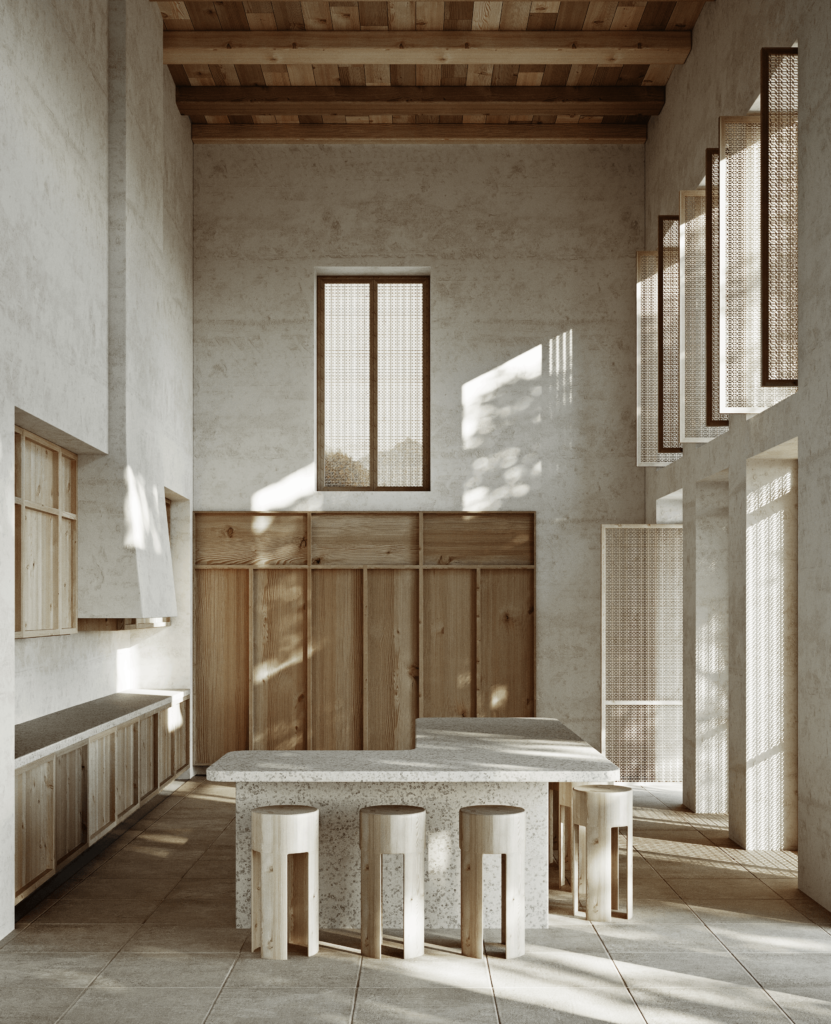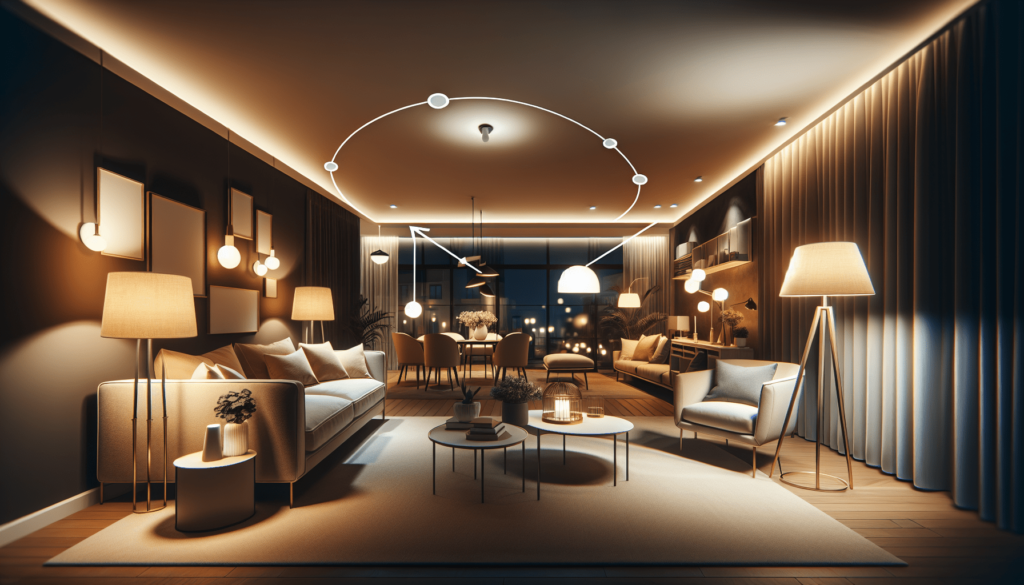Have you ever walked into a room and instantly felt a warm and inviting ambiance? Or perhaps you’ve entered a space that felt cold and unwelcoming? The difference lies in the power of proper residential lighting design. Lighting is not just about functionality, but also about creating an atmosphere that enhances your living space. From choosing the right fixtures to carefully considering the placement and intensity of light, a well-designed lighting plan can completely transform your home, making it a place you’ll love to come back to at the end of the day.

Benefits of Proper Residential Lighting Design
Improves Safety and Security
Proper residential lighting design plays a crucial role in enhancing the safety and security of your home. Adequate lighting ensures that your surroundings are well-lit, reducing the risk of accidents and tripping. Additionally, a well-designed lighting system can deter potential intruders by eliminating dark areas and creating a sense of security. Motion sensor lights and strategically placed outdoor lighting fixtures can further enhance the security of your property.
Enhances Mood and Well-being
The right lighting design can significantly impact your mood and overall well-being. Natural lighting, for example, has been proven to boost serotonin levels, which can cheer you up and improve your overall mood. On the other hand, warm lighting with dimmers can create a cozy and relaxing atmosphere, perfect for winding down after a long day. By carefully selecting the color temperature and intensity of your residential lighting, you can create different atmospheres to suit your needs.
Increases Productivity and Focus
Proper lighting design is not only important for residential areas, but also for home offices or study spaces. Good task lighting can help increase your productivity and focus by reducing eye strain and providing adequate illumination for reading, writing, or working on projects. Adjustable desk lamps and directed lighting can be used to create a well-lit workspace, helping you stay engaged and focused on the task at hand.
Reduces Energy Consumption
Efficient residential lighting design can contribute to reduced energy consumption and lower electricity bills. By incorporating energy-efficient lighting fixtures, such as LED bulbs, you can significantly decrease energy consumption while still maintaining optimal lighting levels. Additionally, implementing controls like dimmers and timers can further enhance energy efficiency by allowing you to adjust the lighting based on your needs and preferences.
Factors to Consider in Residential Lighting Design
Natural Lighting
When planning your residential lighting design, consider the amount of natural lighting available in each room. Natural light not only saves energy but also offers various health benefits. Make use of windows, skylights, and light-colored curtains or blinds to maximize natural light penetration. Ensure that your artificial lighting complements the natural light, allowing for a seamless transition between day and night.
Room Functionality
Every room in your home serves a different purpose, and this should be reflected in your lighting design. Consider the specific needs of each room and tailor the lighting accordingly. For example, kitchens and workspaces require bright and focused lighting for tasks, while bedrooms and living rooms benefit from softer, more ambient lighting for relaxation. By understanding the function of each room, you can create a lighting design that enhances its purpose.
Ambiance and Aesthetics
Ambiance and aesthetics are essential aspects of residential lighting design. Lighting can set the mood of a space and contribute to its overall aesthetic appeal. Consider using different lighting techniques, such as uplighting or accent lighting, to highlight architectural features or artwork. Additionally, consider incorporating decorative fixtures that complement the style and theme of your home. Well-chosen and well-placed lighting fixtures can add depth and character to your living spaces.
Energy Efficiency
In today’s world, energy efficiency is a key consideration in every aspect of our lives, including residential lighting design. Opt for energy-efficient lighting fixtures, such as LED bulbs, which consume less power and have a longer lifespan compared to traditional incandescent bulbs. Additionally, consider installing lighting controls, such as dimmers and timers, to further optimize energy usage and reduce wastage. Investing in energy-efficient lighting not only helps the environment but also saves you money in the long run.

Different Types of Lighting Fixtures
General Lighting
General lighting, also known as ambient lighting, provides overall illumination to a room. It is the primary source of light and ensures that the entire space is adequately lit. Ceiling-mounted fixtures such as recessed lights, track lights, or chandeliers are commonly used for general lighting purposes. They provide a uniform level of light throughout the room, creating a well-lit and functional space.
Task Lighting
Task lighting is designed to provide focused and directed light for specific activities or tasks. It is commonly used in areas where detailed work is performed, such as kitchen countertops, desks, or reading corners. Task lighting can be achieved through desk lamps, under-cabinet lights, or pendant lights. By providing localized illumination, task lighting enhances visibility and reduces eye strain, enabling you to perform tasks with ease and precision.
Accent Lighting
Accent lighting is used to emphasize or highlight specific features, objects, or architectural elements in a room. It adds depth, drama, and visual interest to the space. This type of lighting is often achieved through the use of spotlights, wall sconces, or recessed lights. By strategically placing accent lighting fixtures, you can draw attention to artwork, sculptures, or decorative elements, creating a focal point and adding a touch of sophistication to your home.
How to Achieve Proper Residential Lighting Design
Evaluate Current Lighting
Before embarking on a residential lighting design project, it is essential to evaluate your current lighting setup. Take note of any areas that lack sufficient lighting or areas where the lighting is too harsh or dim. Identify any fixtures that may need replacement or require additional lighting sources. Understanding the strengths and weaknesses of your current lighting will guide you in creating an improved lighting plan.
Plan for Lighting Zones
Divide your home into different lighting zones based on room functionality and usage. Consider the specific lighting requirements and activities that take place in each zone. For example, a kitchen would have different lighting needs than a living room. By designing lighting zones, you can ensure that each area has the appropriate lighting design to meet its specific requirements.
Consider Individual Lighting Requirements
Each member of your household may have different lighting preferences and needs. Take into account the individual requirements of family members, especially in spaces like bedrooms and study areas. Consider factors such as age, visual impairments, and personal preferences when planning the lighting design. Customizing the lighting to suit individual needs ensures optimal comfort and functionality for everyone in the home.
Use Layered Lighting
Layered lighting is a technique that involves using different types of lighting fixtures to create depth and variation in a room. By combining ambient, task, and accent lighting, you can achieve a well-balanced and visually appealing lighting design. Layered lighting ensures that all areas of a room are adequately illuminated and allows for flexibility in adjusting the lighting according to different needs and occasions.
Implement Dimmers and Controls
Dimmers and lighting controls are essential components of proper residential lighting design. Installing dimmers allows you to adjust the brightness levels of your lighting fixtures, creating the desired ambiance and saving energy. Lighting controls, such as timers and motion sensors, add convenience and efficiency by automatically turning lights on and off based on occupancy or time of day. Integrating these controls into your lighting design enhances both functionality and energy efficiency.

Lighting Design Tips for Different Rooms
Living Room
The living room is a space where various activities occur, from entertaining guests to relaxing with a book or watching TV. To create a versatile lighting design, incorporate a combination of ambient lighting, task lighting, and accent lighting. Start with general overhead lighting, such as a chandelier or track lights, to provide overall illumination. Add table lamps or floor lamps for task lighting near seating areas and use accent lighting to highlight artwork or architectural features.
Bedroom
In the bedroom, lighting should be designed with relaxation and sleep in mind. Opt for soft, warm lighting to create a cozy and tranquil atmosphere. Bedside table lamps or wall-mounted sconces are ideal for providing task lighting for reading or nighttime routines. Consider dimmers for overhead or pendant lights to adjust the lighting based on your preferences. Avoid using bright or harsh lighting that can interfere with your sleep quality.
Kitchen
The kitchen is a functional space that requires both bright task lighting and ambient lighting. Install under-cabinet lighting to illuminate countertops and prep areas. Pendant lights above the island or dining table can provide both task lighting and a stylish focal point. Consider recessed lights or track lights for overall ambient lighting. Ensure that the lighting is evenly distributed throughout the space to minimize shadows and provide optimal visibility.
Bathroom
Proper lighting in the bathroom is essential for grooming, makeup application, and creating a pleasant environment. Use a combination of vanity lighting and overhead lighting to ensure sufficient illumination around the sink and mirror area. Wall sconces on either side of the mirror provide even lighting and reduce shadows on the face. Consider adding dimmers to adjust the lighting based on different needs, such as bright lighting for grooming and softer lighting for relaxing baths.
Lighting Trends and Innovations
Smart Lighting
Smart lighting systems are becoming increasingly popular in residential lighting design. These systems allow you to control and automate your lighting using smartphone apps, voice commands, or motion sensors. You can customize the brightness, color temperature, and even create schedules for your lighting. Smart lighting provides convenience, energy efficiency, and the ability to create different lighting scenes to suit various activities and moods.
LED Lighting
LED (light-emitting diode) lighting has gained popularity due to its energy efficiency and long lifespan. LED bulbs consume significantly less energy than traditional incandescent bulbs and can last up to 25 times longer. LED lighting is available in various color temperatures, allowing you to create the desired ambiance in your home. They are also more environmentally friendly, as they do not contain toxic substances such as mercury.
Biophilic Lighting
Biophilic lighting is a design approach that aims to connect people with nature through lighting. It incorporates natural elements and lighting techniques to mimic the beauty and patterns found in nature. Biophilic lighting can include features such as daylight simulators, circadian lighting, or the use of colors resembling those found in nature. This type of lighting design has been shown to enhance well-being, reduce stress, and create a more harmonious living environment.

Common Residential Lighting Design Mistakes to Avoid
Insufficient or Overwhelming Lighting
One common mistake in residential lighting design is either having insufficient or overwhelming lighting. Insufficient lighting can lead to dark areas and poor visibility, while overwhelming lighting can cause discomfort and eye strain. Finding the right balance is essential. Consider the function and size of each space, and plan the lighting accordingly. Layered lighting and the use of dimmers can help achieve the desired balance.
Poorly Placed Fixtures
Placing lighting fixtures in the wrong location can negate their intended effect and disrupt the overall lighting design. For example, placing a light source directly above a TV screen can cause glare and impede viewing. Positioning wall sconces too high or too low can create unflattering shadows on the face. Take time to carefully plan and position fixtures to ensure optimal functionality and aesthetics.
Neglecting Color Temperature
Color temperature refers to the warmth or coolness of light. Neglecting this aspect can result in a mismatch between the lighting and the intended atmosphere. For example, using cool white light in a bedroom can create a harsh and unwelcoming environment. It is important to select the appropriate color temperature for each space. Warm white lighting is generally preferred for relaxation areas, while cool white lighting is suitable for task-oriented areas.
Lack of Lighting Control Options
Failure to incorporate lighting control options can limit the flexibility and functionality of your residential lighting design. Lighting controls, such as dimmers and timers, allow you to adjust the lighting based on different needs, activities, and moods. They also contribute to energy efficiency by reducing unnecessary usage. Make sure to include lighting control options in your design to maximize the benefits of your lighting system.
Benefits of Hiring a Professional Lighting Designer
Expertise and Experience
Professional lighting designers have the knowledge and expertise to create a well-designed and functional lighting system. They understand the technical aspects of lighting, such as color rendering, light distribution, and energy efficiency. By hiring a professional, you can benefit from their experience and ensure that your lighting design meets your specific needs and preferences.
Tailored Lighting Solutions
A professional lighting designer can assess your individual requirements and tailor the lighting design to suit your lifestyle and home aesthetic. They take into account factors such as room usage, natural lighting, and personal preferences. With their expertise, they can recommend lighting fixtures, colors, and placement that will optimize the functionality and atmosphere of your space.
Cost and Time Efficiency
While hiring a professional lighting designer may require an initial investment, it can save you money and time in the long run. A professional understands the market and can recommend the most cost-effective lighting solutions that will still meet your needs. They also have access to a wide range of lighting fixtures, ensuring that you won’t have to spend hours searching for the perfect fixtures yourself. Additionally, their experience helps expedite the design and installation process.

Impact of Lighting Design on Real Estate Value
Attractive and Marketable Properties
Proper residential lighting design can significantly enhance the attractiveness and marketability of a property. Potential buyers are often drawn to well-lit spaces that highlight architectural features and create an inviting atmosphere. A thoughtfully designed lighting system can make a positive impression and set your property apart from others on the market.
Increased Property Value
Investing in a well-designed lighting system can contribute to increased property value. Buyers are willing to pay a premium for properties that offer modern and energy-efficient features, including lighting. An energy-efficient lighting system, coupled with well-placed fixtures and aesthetically pleasing design, can potentially increase the resale value of your home.
Conclusion
Proper residential lighting design offers a multitude of benefits, ranging from enhanced safety and security to improved mood and well-being. By considering factors such as natural lighting, room functionality, ambiance, and energy efficiency, you can create a well-designed lighting system that meets your specific needs and preferences. Choosing the right types of lighting fixtures, such as general, task, and accent lighting, is key to achieving a balanced and functional lighting design. Implementing proper lighting techniques, evaluating individual lighting requirements, and using dimmers and controls further enhance the effectiveness of your lighting system.
Avoiding common mistakes, such as insufficient lighting or poorly placed fixtures, ensures optimal functionality and aesthetics. Keeping up with lighting trends, such as smart lighting, LED lighting, and biophilic lighting, allows you to take advantage of the latest innovations in residential lighting design. Hiring a professional lighting designer brings expertise, tailored solutions, and cost and time efficiencies to your project. Finally, the impact of proper lighting design on real estate value cannot be overlooked, as it can significantly enhance the attractiveness and marketability of your property while potentially increasing its resale value. By investing in proper residential lighting design, you not only improve the aesthetics and functionality of your home but also create a safer, more energy-efficient, and desirable living environment.



